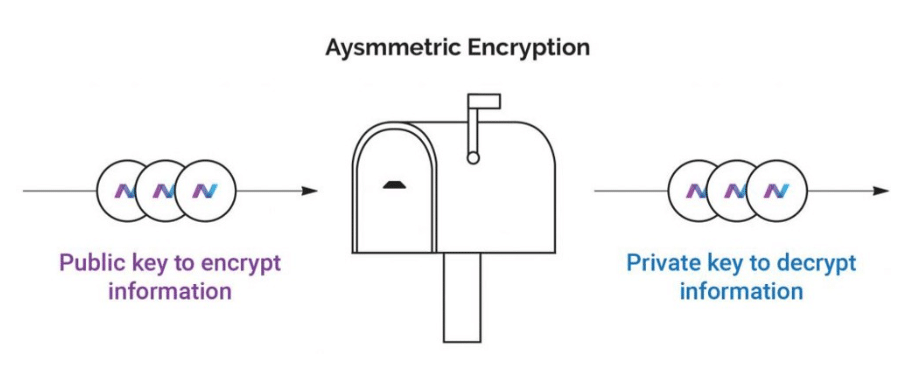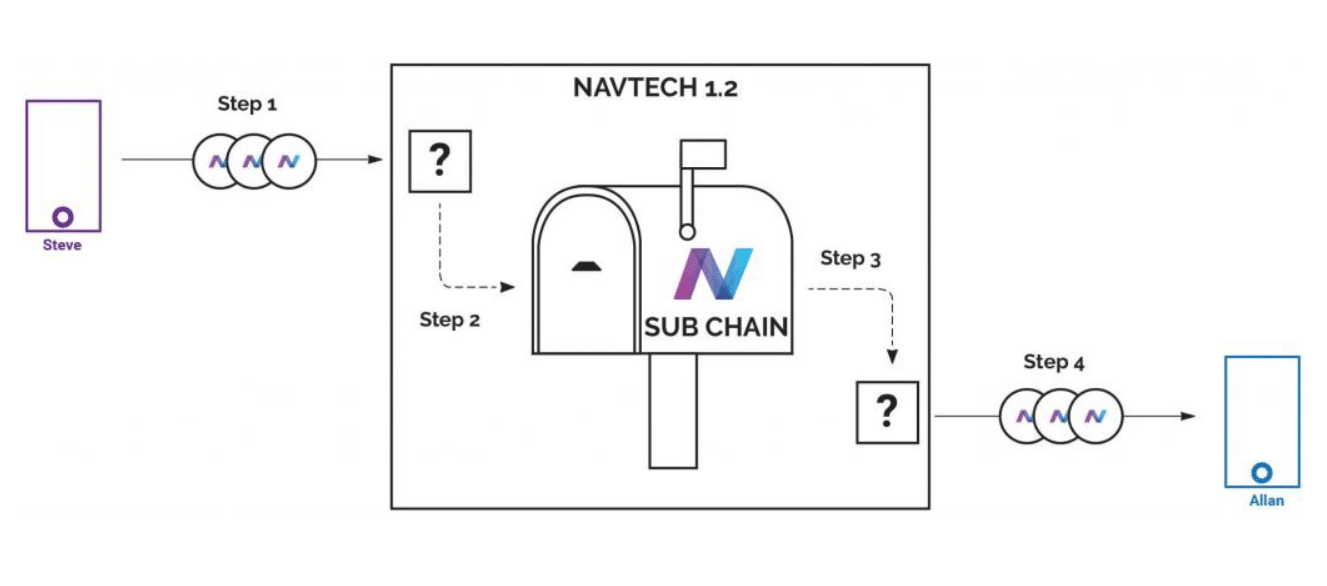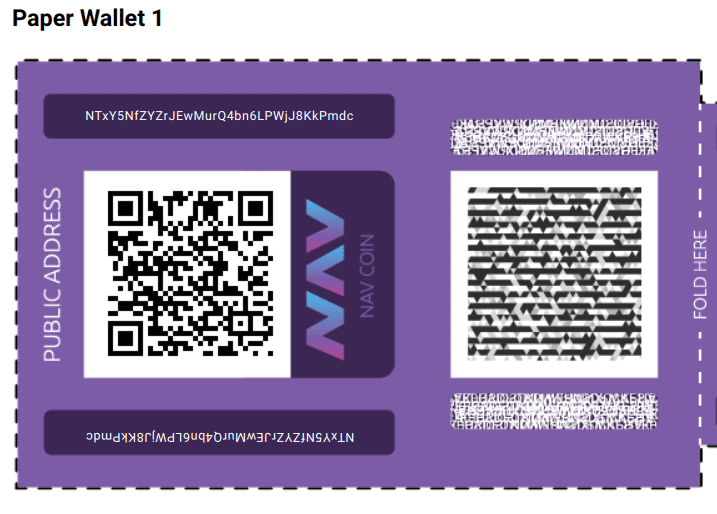What is Nav Coin?
Nav Coin is cryptocurrency designed to be anonymous and simple to use. Established in 2014, it belongs to an older class of cryptocurrencies that came before the current wave of ICOs. Nav Coin has stood the test of time well. Over the past four years it has implemented various upgrades, features, and improvements. The team is dedicated and knowledgeable, and as a result the platform has seen consistent growth.
However, Nav Coin has not seen the kind of growth that the other competitors in the race to be the top privacy coin have seen. Dash, Zcash, and Monero have all outstripped Nav Coin in terms of adoption and funding. Recently, the project has seen a comeback, as they’ve begun to emphasize design, usability, and experience. Nav Coin wants to make it simple and fast to use private transactions.
The original Bitcoin code is the bedrock for Nav Coin’s code, but the developers have changed several key features of Bitcoin. First, Nav Coin implements a secondary sub-chain known as NavTech. NavTech enables transaction anonymization and mixing (see below). Second, Nav Coin exchanges Bitcoin’s proof of work algorithm for proof of stake. Additionally, Nav Coin transactions are faster and cheaper than Bitcoin. In the future, they will also support decentralized applications coded direct to the blockchain.
Transaction Times, Fees, & Scalability
Since the early days, one of Nav Coin’s strong suits has been its fast transaction times. Nav Coin sees block confirmations every thirty seconds as opposed to Bitcoin’s ten minutes. This is faster than Monero (2 minutes) and Zcash (2.5 minutes). Dash also averages about 2.5 minute block times, but its masternodes make it possible to send instant transactions. That said, Nav Coin has the fastest standard block time of any privacy coin.
These fast transactions aren’t expensive either. Where currencies like Bitcoin and Ethereum are having trouble with high miner fees, Nav Coin keeps its transaction costs low. The average fee is only 0.0001 NAV to send a standard transaction. Private, encrypted transactions can be more expensive.
Nav Coin is also looking ahead for scalability concerns. They already use a proof of stake consensus algorithm that reduces the energy consumption associated with mining. The community has also already voted and activated SegWit, making block size smaller. Future proposals will implement an equivalent of Bitcoin’s Lightning Network, taking some transactions off-chain with instant settlement.
Anonymity & Untraceability
The community firmly describes Nav Coin as a “privacy coin.” However, the reasons for wanting privacy aren’t sketchy or malicious. In fact, token privacy and untraceability is an important function for a financial system and a currency. It contributes to a token’s fungibility – the ability for anyone to accept any token, because the token’s history can’t be traced. Each NAV token is equally valuable and has no known history, much like the fiat currency in your pocket.
Anonymous transactions are not required or even standard on Nav Coin. They’re optional. But if you choose to enable Nav Coin’s anonymous transactions, the transaction is fully dissociated from your sending account and IP address on the blockchain.

These anonymous transactions take place using the NavTech subchain. This unique solution enables a user to send NAV to a recipient via a subchain of the main blockchain. The transaction is encrypted, and the sender transmits the NAV for the transaction to the NavTech subchain, instead of sending it directly to the recipient. The NavTech subchain involves multiple servers and layers of encryption passing the transaction around. NavTech then sends the final payment to the recipient from a token pool that the NavTech contract manages. The original tokens from the sender are not the same as the tokens the recipient receives.

The layered encryption and mixing in a managed token pool is Nav Coin’s privacy method. It ensures no one can follow a NavTech transaction to its final destination. In the future, Nav Coin hopes to implement even more robust privacy measures like fake transactions and dummy accounts that increase the circulation of NAV through the NavTech subchain, further obfuscating the trail of real transactions.
Valence Project
In addition to privacy measures in the development pipeline, Nav Coin also has projects under development that will turn it into more than just a currency. The Valence Project is a sister project to Nav Coin. It will power the NavTech subchain, but it will also provide functionality for many other uses. Valence seeks to be the first anonymous platform for decentralized apps.
In contrast to other decentralized apps platforms, however, Valence will not use a virtual machine. Instead of coding in an environment hosted on the blockchain, Valence aims to allow developers to code directly to the blockchain. This is a tricky proposition, and there’s all kinds of safety concerns that the development team will have to tackle. Valence will, of course, operate a separate blockchain from Nav Coin. However, they will interface.

Valence is not yet released, so we don’t have complete information on how exactly it works. Needless to say, it’s a big challenge, but it could be a compelling solution that offers a unique experience for developers should the Nav Coin team pull it off.
Proof of Stake Mining

While most other cryptocurrencies implement some form of proof of work mining, Nav Coin was among the first to implement proof of stake. Proof of stake relies on users putting up a portion of their NAV holdings in order to gain an opportunity to create a new block. If the network ratifies the new block you created, you’ll receive an award. If your block is bad or contains fraudulent transactions, the proof of work algorithm takes away all the coins you staked. This incentivizes honest block creation.
With Nav Coin, it’s possible to earn a 5% interest from staking your NAV. In order to do so, however, you’ll need to operate a staking node on the network. You can do this on your computer by downloading the Nav Coin Core client and setting the amount of NAV you want to stake. Alternatively, you can buy a Raspberry Pi and set it up to run a staking node for you. The arduino client for this application is called Nav Pi. The Raspberry Pi uses less energy to stake your coins, and it can always be on. It also doesn’t consume battery or processing power on your main computer like the Core client would.
Nav Coin Token (NAV)
NAV launched in 2014, and it has been publicly listed on exchanges since then. You can use the NAV token as a form of value transfer, similar to the way you would use Bitcoin.

The NAV network is still fairly small, however. Only 100 wallets hold 72% of all NAV tokens. 1000 wallets hold 92%, meaning that the number of NAV users is still fairly small.
Where to Buy Nav Coin (NAV)
NAV is an established coin, and as such you can find it on most major exchanges.
Binance conducts over 50% of all NAV trading. Next is Bittrex with around 20%. Upbit, a Korean exchange closed to US investors, does another 15% of all trades. The remaining orders come from Poloniex and Cryptopia.
You can also buy NAV directly on their website using a credit card. NAV has an agreement with Changelly to facilitate fiat purchases and swaps for other cryptocurrencies.
How to Store Nav Coin (NAV)
You’ll need to set up a NAV wallet to store your coins. Just visit Nav Coin’s downloads page to get started.

There’s an option for a paper wallet if you just intend to store your NAV. You can create a paper wallet quickly using their web interface.
However, if you want to earn interest from staking, you’ll need to run a Nav Coin Core client. You can download these for PC, Mac, Linux, and Raspberry Pi on the downloads page linked above.

Finally, Nav Coin also has a light wallet for making payments on the go called NavPay. NavPay is available for mobile and web.
Nav Team
The team behind Nav Coin and Valence is Encrypt S Ltd. However, it’s an open source project. As such, they’ve built up a big community following, and anyone can contribute.
Engineering

Nav Coin features a very active development team. New updates come out regularly, usually every week.
The Lead Engineer is Crag MacGregor. He is also CEO of Encrypt S Ltd. They’re the blockchain development company behind the Nav Coin project. He’s from New Zealand.
Marketing & Design

Nav is also one of the most beautiful, easily understood coins out there. This is in large part thanks to their marketing and creative team. Nav Coin’s focus on style, branding, and communication sets them apart in blockchain space. Usability is important for adoption of any early-stage project, and it’s nice to see Nav Coin taking this element of the platform seriously.
Conclusion
Nav Coin has been around for a while, is making progress, and is doing interesting work in the private payments and anonymous dapps space. However, they continue to fly relatively under the radar with a market cap just within the top 150 coins worldwide, despite being founded around the same time as other privacy coin projects. Ultimately, do your own research to decide if this project is undervalued or if its competitors have outpaced it in the privacy race.
The post What is Nav Coin? | Beginner’s Guide appeared first on CoinCentral.

TheBitcoinNews.com – Bitcoin News source since June 2011 –
Virtual currency is not legal tender, is not backed by the government, and accounts and value balances are not subject to consumer protections. TheBitcoinNews.com holds several Cryptocurrencies, and this information does NOT constitute investment advice or an offer to invest.
Everything on this website can be seen as Advertisment and most comes from Press Releases, TheBitcoinNews.com is is not responsible for any of the content of or from external sites and feeds. Sponsored posts are always flagged as this, guest posts, guest articles and PRs are most time but NOT always flagged as this. Expert opinions and Price predictions are not supported by us and comes up from 3th part websites.
Advertise with us : Advertise
Our Social Networks: Facebook Instagram Pinterest Reddit Telegram Twitter Youtube











